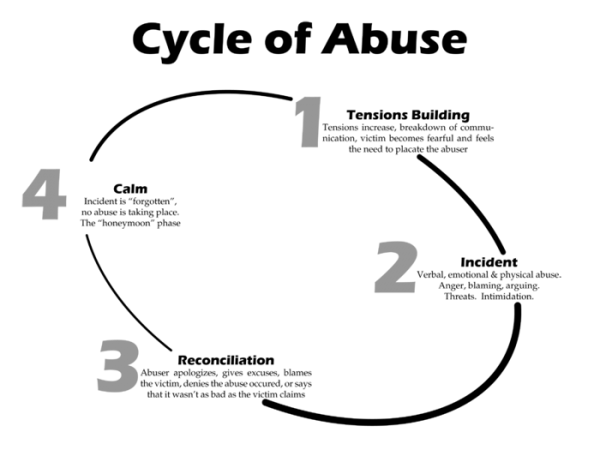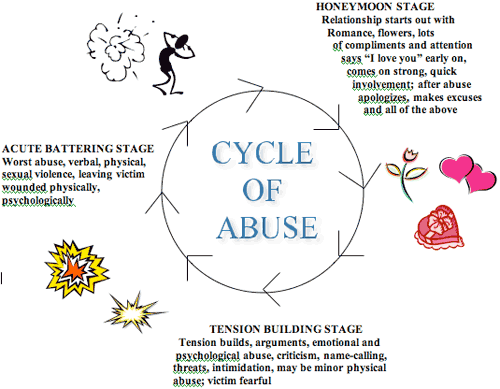by Stephen Cocconi – Channeling Michael – 1996-2012
Abuse is a vague word. It is vague because there are so many ways in which it can be perpetrated. At its foundation is an experience of pain and suffering that someone is unconsciously transferred; enlisting someone else (almost always less powerful) in the torment as to diffuse it inside themselves.
Because the dynamic is about power and powerlessness abuse is usually passed from the stronger to the weaker. The bully mentality is at the top of the list for these behaviors. Abuse is about stealing power psychically from another person. There are varying degrees of each type. This list is meant to illustrate the many ways that we callously and quite commonly hurt one another.
The point of this article is definition so it may lead to recognition: when I am doing it, and when I witness it in others. Condemnation may lead to some abstention of the behavior, but forgiving oneself and forgiving others for their being your “triggers” is paramount! (Below is a chart that shows the emotional journey of an “abuse cycle”.)
There are five main categories of abuse. Some are more obvious and some more subtle. Each type of abuse as listed below are sequential and will tend to build upon each other.
Emotional Abuse
To abuse someone emotionally often rests on the betray of a trust. Then following that act with either a denial of the event or blaming the cause on the recipient. Abuse strategies of this nature, happen most frequently between intimates where one tends to be the object and the other the perpetrator. But in married couples this type of “one-downmanship” can spiral out of control damaging any chances of reconciliation or joy in the family setting. are usually the first to arise based upon a persons inner state that they, the abuser, have been hurt by you. This justification, when fully unconscious, as it is most of the time, will manifest itself eventually in the abusers words. “If you weren’t this way or that, if you didn’t do this thing or that, if you didn’t say this or that, etc.” Neurosis and avoidance behaviors tend to arise from this type of abuse but ironically so does the “co-dependent” relationship where the recipient has learned that although the attention is painful and negative, it was the wavelength upon which signals of love were conveyed. The “Women Who Love to Much” Syndrome. But there are men who allow the same kind of abuse.
In fact, the whole usefulness of the Inner Child concept is to understand where one was victimized when helpless was present and bleeding out into the present. The whole point of counseling is for the Inner Adult to put at end to the tyranny our grown-up, acting out child, might be inflicting upon others.
Psychological Abuse
Crazy making is the simplest way to express this form. It is often the most sadistic form carried out with a sophisticated process with great deliberateness. Patrick Hamilton’s psycho-thriller play, Gas Light, the male lead embarks on a plot to destroy the sanity of his wife. Brilliantly portrayed in the 1944 movie by Ingrid Bergman and Charles Boyer, it illustrates how when one party begins the process of isolating another, undermining the others credibility with rumor, or out put-downs, the sabotage is meant to collapse their sanity. People with strong opinions who oppose one another should not necessarily be listed under this category. It each person operates from a reasonable level of power, then it is combat and not a victim-perpetrator scenario.
Verbal Abuse
Verbal abuse involves sarcasm, invalidating the other person instead of the person’s idea. Name calling, lying, withholding information, or refusing to acknowledge the issues created with another is also an expression of this type of abuse. Body language and facial expressions will convey anger or disapproval. When no words are offered as to explanation, the child will incorporate these “looks” into their unconscious and associate them with meanings. usually associated to “I’m bad”, “I’m unwanted” etc. Silence, ignoring, and otherwise non-presence is also a signal of psychological infliction of pain by withholding any interaction whatsoever. The resulting stigma is what one might call “abandonment”, and produce what is known as “attachment disorder”, not being able to form any meaningful relationships.
Accusation is another powerful form of verbal abuse. Seeking power over another, an accuser may be decrying and injustice or shifting negative attention toward a person who they dislike. There is some kind of emotional payoff for the accuser. This tactic is always a favored one in circumstances where you have blamer’s, bullies, and power seekers; like authoritarian families and totalitarian governments.
In the modern era, the McCarthy Era style of “guilt by accusation” was an example and dark warning of how effective verbal abuse can draw other fearful and hateful abusers together in a quest to diminish another. One of the greatest logical fallacies humans routinely fall prey too is often applied in such circumstances: “if they have nothing to hide, they have nothing to fear. Seldom does anyone ask: who is doing the accusation and what do they have to gain by it? This standard should be noted because the focus immediately goes toward the accuses and not the accuser. Slander and defamation laws leave are useless when media “reports” these things as “news” and something “they said”. We allow travesties of injustice all the time because they emotionally charge us.
Sexual Abuse
Child molestation, unwanted fondling, spousal rape, withholding of sex form spouse or lover, humiliation sexual positions, going numb during sex. Rape, as a form of warfare and demoralization is one of the oldest know to man. In Bosnia, the Serbs raped women by the thousands. During WWII, the Japanese made Korean women virtual sex slaves referring to them euphemistically as “comfort women. In the last decade, allegations have arisen from many nations that the Catholic Church conspired to hide thousands of cases of molestation carried out by their priests. But the most common, and probably the most damaging is that of incest. Thought to happen far more often, the “taboo” might be universal but so to does it seem to be the practice; particularly between father and daughter.
Physical Abuse
Literal hitting, kicking, pulling on ears, inflicting burns upon another, deprivation of water, food, sleep or means to keep up ones hygiene.
The punishing parent who uses a belt or stick or club or devise of any kind to discipline the child. In and of itself, spanking with a hand doesn’t mean abuse. However, sometimes, a face slap as an act meant to demeen or enforce submission, can be. Brutality and rage are two obvious forms of physical abuse, but not always visible or readily apparent. This can be witnessed in outright torture.
There are other factors that are important. It is important in the animal kingdom for the young to get some direct body to body pain as a way of teaching about social hierarchy and consequence. This bodily training actually reinforces safety and bonding between parent and child — when used appropriately and sparingly!)
Things to Remember
First it is possible to abuse the accusation or categorization of abuse as well as characterizing someone as an abuser and yourself as a victim. Anyone can be an abusive at anytime. What is vital to understand is how commonplace a fashion we all inflict abuse upon one another. The reason is simple: we all hurt – and when we hurt it spills over onto others. That is the phenomenon of “passing the experience” at work. Make sure you know what it is that you hurt from. Being a victim is not the issue here, it is when we become the perpetrator that things get rough.




Sorry, the comment form is closed at this time.